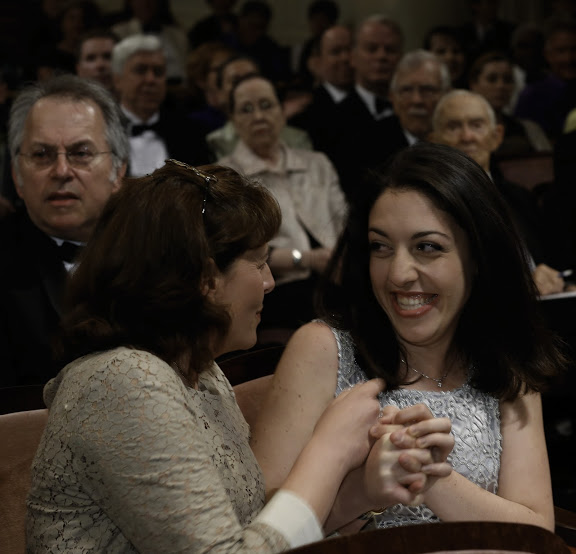Johannes Brahms: Three Intermezzi, Op. 117
The three Intermezzi Op.117 are, together with the piano pieces of Op. 116, 118 and 119, collectively the last Brahms wrote for solo piano, and are among his very last compositions. Only three more opus numbers followed, and they involved the keyboard as well. In a way, it was entirely fitting that Brahms drew the curtains on his career with music for this instrument. He had been an outstanding pianist himself since his teens. His earliest surviving work published under his own name – the Scherzo in E-flat Minor, Op. 4, written when he was eighteen – was a piano piece, and Brahms continued to write for the instrument throughout his life.
Op. 117 dates from 1892. The first is prefaced by words from a Scottish lullaby, “Lady Anne Bothwell’s Lament,” which begins: “Baloo, my babe, lie still and sleep; It grieves me sore to see thee weep.” Brahms puts the melody in an inner voice surrounded by a gently rocking accompaniment. The central section (all three Intermezzi are in three-part form) moves from E flat major to E flat minor, taking the listener to even more remote regions of sombre reflection. The second Intermezzo is a study on a recurring, descending two-note motif embedded in garlands of accompanying arpeggios. The mood is wistful, pensive, “composed in Brahms’s rainy-weather mood” (Charles Burr). If the second was Brahms in his “rainy-weather mood,” the third “is surely Brahms at his bluest. … In the middle part, a kind of fearful cheerfulness is attempted, but the brave attempt is doomed.” Brahms called this Intermezzo “the lullaby of all my griefs.”
Brahms: Seven Fantasies, Op. 116
The titles of the seven pieces in Op.116, “Intermezzo” and “Capriccio,” are not especially revealing in themselves of any unique properties, though the Intermezzos tend to project a reflective, late autumnal quality in music of quiet resignation and tender sentiments, while the Capriccios are energetic and even passionate. Each is a unique and distinct creation, yet together they constitute a unit greater than the sum of their parts. The entire set opens and closes with a vigorous Capriccio in D minor. Within this framework are found four Intermezzos and another Capriccio, all in keys closely related to D minor and to each other. Malcolm MacDonald, in his monograph on the composer, even makes a case for Op. 116 as a multi-movement sonata, with No. 3 as a scherzo and Nos. 4-6 as the slow movement in E major with a central contrasting E minor section. The motivic unity is striking: the three Capriccios all feature melodic chains of descending thirds, a quality found more discreetly in the Intermezzos as well.
Each piece is in three-part form, with a contrasting central section and with a return of the opening material sometimes considerably modified and, in a few cases, much abridged. Within these general outlines, Brahms lets his poetic imagination roam freely as he develops short, epigrammatic or enigmatic musical cells in some of his most personal and intimate compositions. Simplicity and concentration are the keynotes. Lionel Salter stated the case perfectly when he wrote: “Their brevity only serves to heighten the intensity of their feeling. It is as if the composer, at the end of his life, had compressed the essence of his musical and emotional thoughts into these miniatures.”
Piotr Ilyich Tchaikovsky: Piano Sonata in G major, Op. 37 (Grande Sonate)
Excepting The Seasons, rarely does any of Tchaikovsky’s solo piano music turn up on recitals, and few pianists have championed the sonata on today’s program. Yet here we have a work written on a grand scale that is laden with brilliant effects, passionate writing, Tchaikovskian melancholy and orchestrally- conceived sonorities. There are plenty of critics today who heap opprobrium on the sonata, but such was also the case for the same composer’s first piano concerto, which went on to become the world’s most popular work of its kind. A persuasive performance of the Grande Sonate inevitably leaves the audience wondering why this work is not played more often.
The sonata bears no official number, as it is really the only completed work in this genre Tchaikovsky acknowledged in his lifetime. He began a Sonata in F minor in 1863 while still a student in St. Petersburg (its single movement has been completed by pianist Leslie Howard), and finished one in C sharp minor two years later, but the latter was not published until after his death, when it was assigned the misleading opus number 80, even though the music antedates his Op. 1. It is sometimes referred to as “Sonata No. 1” today. The G major sonata was composed in the same year (1878) as the Fourth Symphony and the Violin Concerto. It was dedicated to the German pianist Karl Klindworth, but the highly successful first performance went to Nicolai Rubinstein in Moscow on November 2 1879.
The opening fully justifies the appellation Grande Sonate in its evocation of processional pomp and splendour. During the course of this highly energetic sonata-form movement Tchaikovsky incorporates three well-contrasted subjects. The development section is unusually dramatic and elaborate, the textures at times approaching orchestral density.
The slow movement, like that of Beethoven’s Seventh Symphony, is based more on harmony than on melody. Nevertheless, it is imbued with typically Tchaikovskian melancholy in the outer sections, and with inspired lyricism in its central episode.
The Scherzo departs from the standard model in its unusual metre of 6/16, which involves two sets of triplets per bar. Many listeners and commentators find this the most interesting movement of the sonata, one marked by sparkling brilliance, intriguing cross rhythms and exquisite delicacy.
No fewer than four themes are incorporated into the rondo-finale. Most memorable are the opening refrain and the sweeping melody that sounds for all the world like an operatic tenor pouring his heart out to his lover.
Program notes by Robert Markow, 2013.




